How to overseed a lawn to boost the health and vibrancy of your grass
If your grass is looking a little sparse, learning how to overseed a lawn can fix that. Here we ask the experts how is best to do it
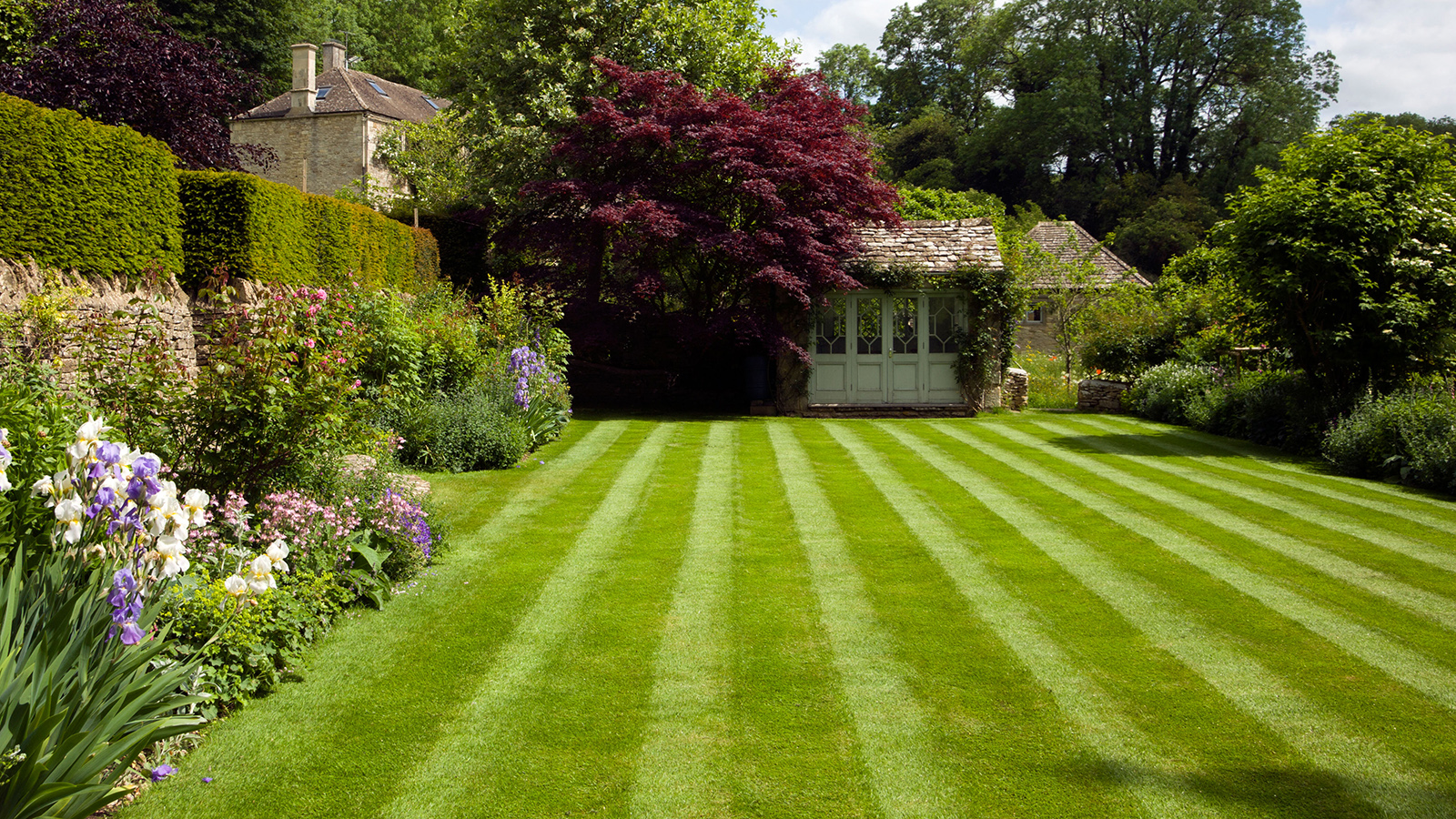
Learning how to overseed a lawn, is key for strengthening and revitalising your existing garden. It is also environmentally friendly as it reduces the need to use chemicals to support your lawn, so you can improve your garden sustainably.
Overseeding is the act of spreading lawn seed to help thicken lawns and encourage healthier growth. Cutting lawns beforehand with the best petrol lawnmower is an essential first step.
"Overseeding a lawn can encourage a thicker, more vibrant lawn as it fills in any bare or damaged patches of grass, helping to improve its overall appearance while reducing the amount of weeds and moss," says Peter Chaloner, managing director of Cobra Garden Machinery
"It’s a great way of filling any sparse areas that may have had excessive wear and tear or damage over the summer from garden parties, children playing or heat. Preparing lawns by overseeding them, can help to ensure the grass is as thick and healthy as possible for the spring and summer months."
How to overseed a lawn step-by-step
"Firstly, measure your lawn ideas to ensure you purchase enough seed for the area and when you decide to sow, it’s best to pick a day that’s not too windy and preferably after a period of rainfall," says lawn seed expert Guy Jenkins.
1. Mow the lawn first
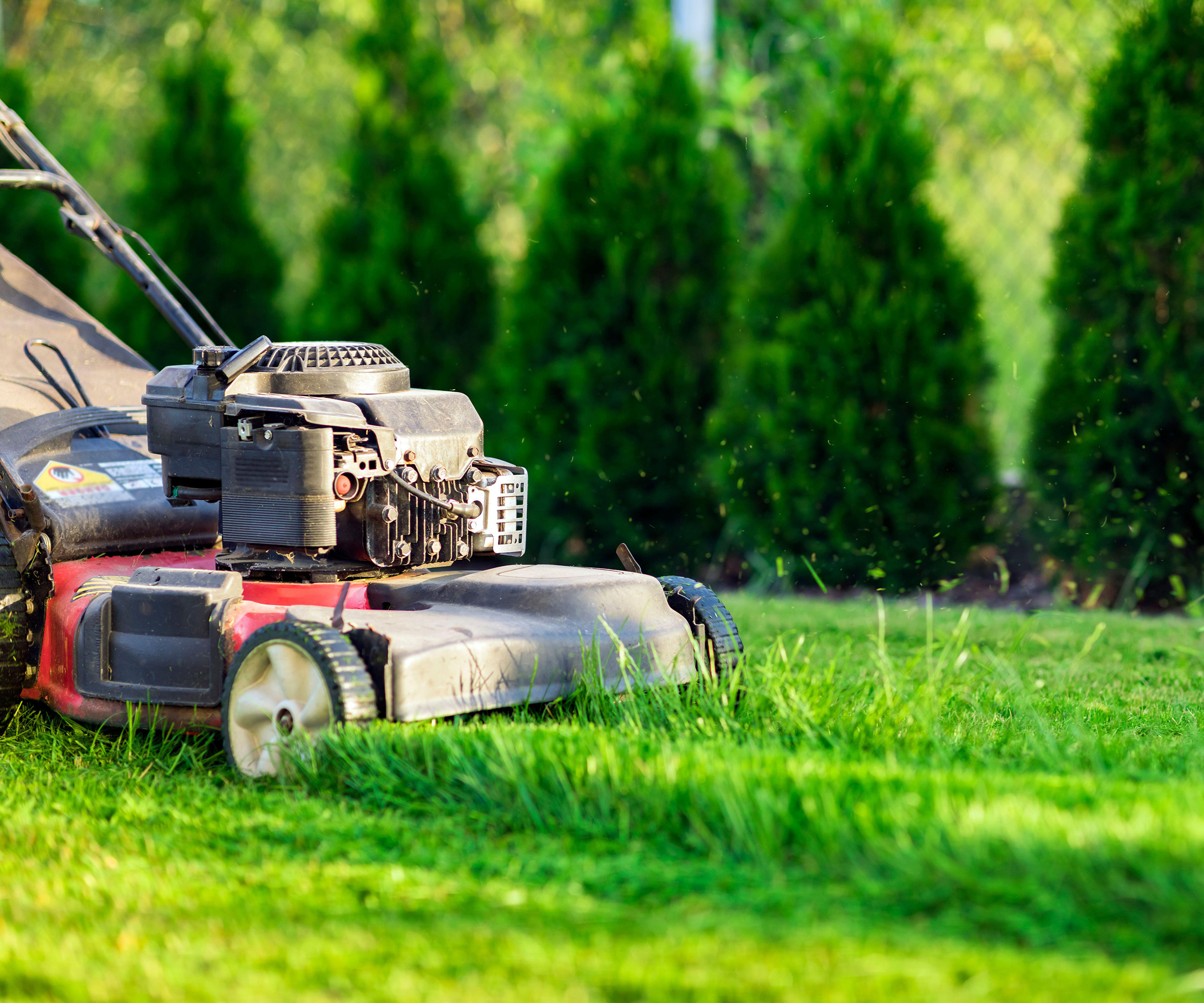
"Mowing your lawn before reseeding is essential as it allows for easier preparation, better seed-to-soil contact, and prevents existing grass from smothering the new seedlings," explains Josh Novell, of Polhill Home & Garden.
Chris McIlroy at The Grass People also points out that you will not be able to mow the lawn, even with the best cordless lawn mower, while the seeds are establishing over the next 6-8 weeks after sowing.
Bring your dream home to life with expert advice, how to guides and design inspiration. Sign up for our newsletter and get two free tickets to a Homebuilding & Renovating Show near you.

Josh has over six years' worth of experience in the horticulture industry. He began his career as a strategy manager before working his way up to become a director and is now a key part of the day-to-day running of Polhill garden centre.
2. Remove debris from the surface
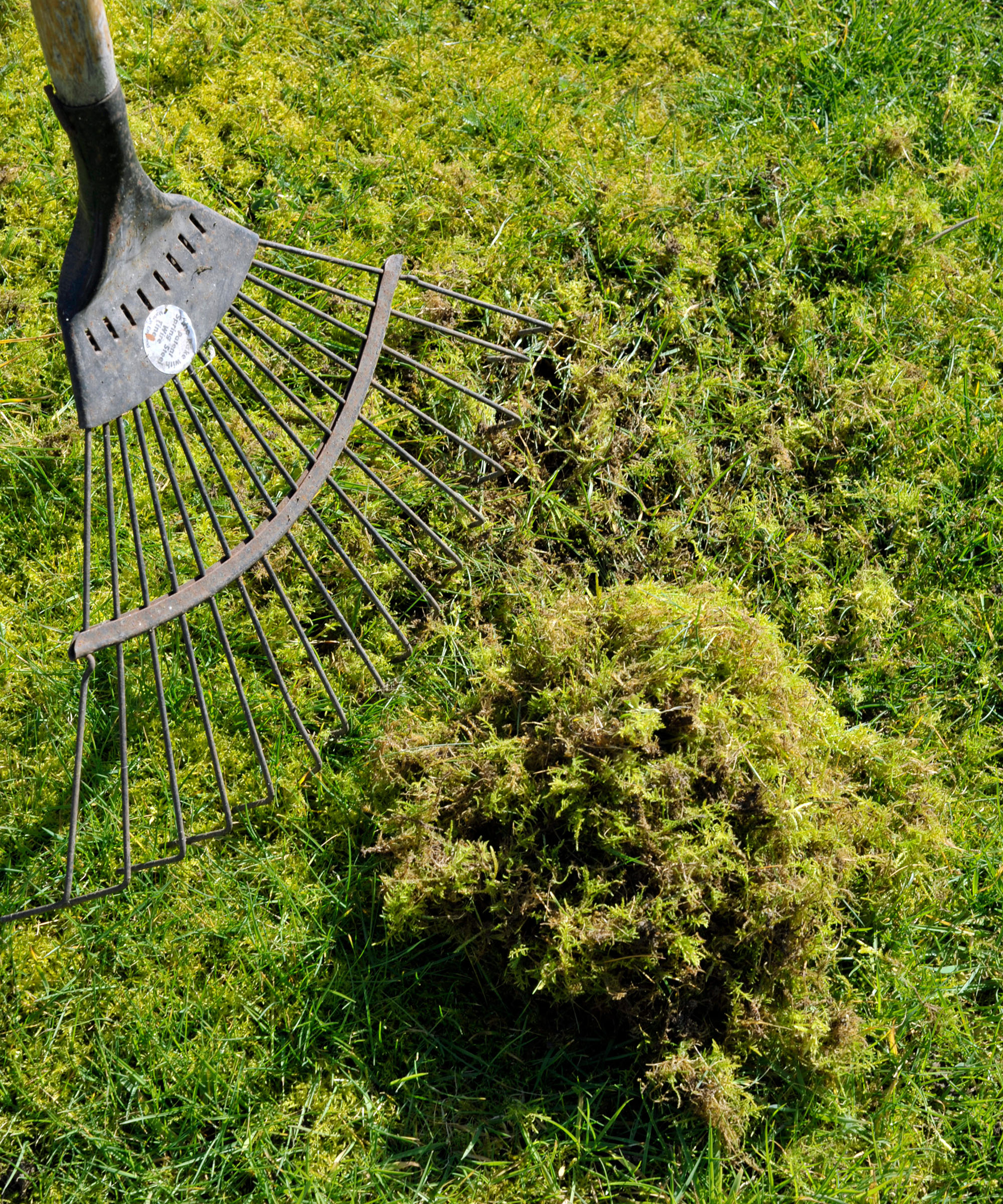
Guy Jenkins recommends using a spring tine rake or a leaf rake to rake in different directions. This will help remove and break up layers of dead matted grass or thatch before you start on how to overseed a lawn. This also helps get rid of moss in lawns.
"These must be removed from your lawn before you sow grass seed as they compete with the healthy grass for vital nutrients and soil moisture, which are vital in the hotter weather to prevent the shallow roots suffer lasting damage."
"This process is known as scarifying a lawn and loosens the soil and aerates the lawn roots. The earlier you scarify, the better - if the temperatures are between 15°C and 20°C ideally,' says Guy.

Guy is the Consumer Manager for Johnsons Lawn Seed, the UK’s oldest provider of lawn seed, and is an expert in the field of lawn seed and lawn care.
3. Aerate the surface of your lawn
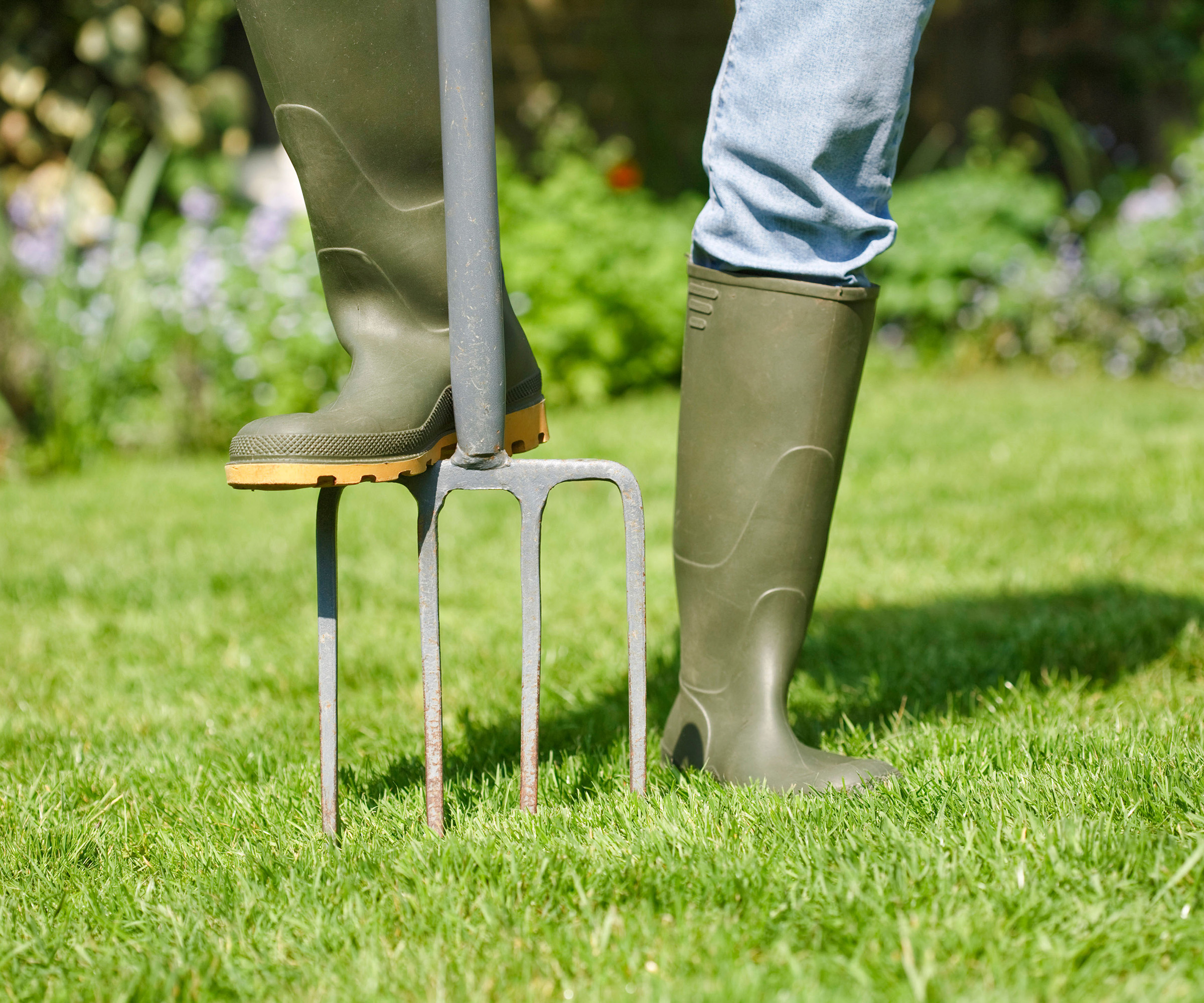
"You may notice that areas of your lawn will have experienced heavy footfall over the previous year and become waterlogged due to the wet, winter weather," says Guy Jenkins.
"This causes the soil to become compacted which can cause problems with drainage, weeds, and moss. This can be resolved if you aerate a lawn, a simple process of perforating the soil with a garden fork to create small holes in your lawn to allow air, water, and nutrients to penetrate the grass roots. Spike ground with a hollow tine fork, a normal fork can be used, up to a depth of 15cm (6in) to de-compact the soil."
4. Apply a good quality top dressing
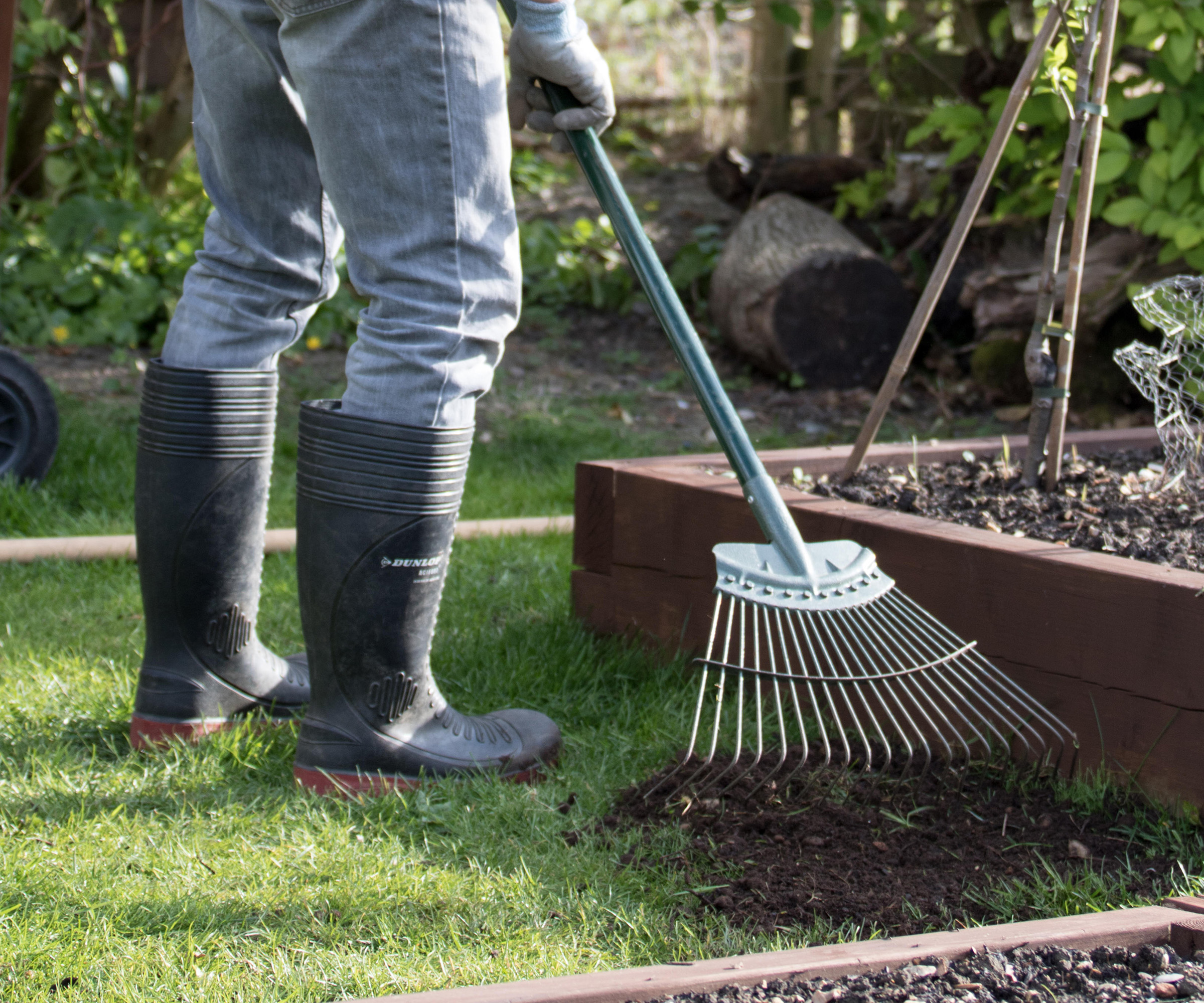
"Before you start to sow seed, top dress the lawn with a good quality topsoil, making sure the dressing fills the holes created when aerating. This allows water, air, and nutrients to penetrate deeper into the soil and will result in deeper rooting, and dense grass growth," says Guy Jenkins.
"It is a good idea to apply some lawn fertiliser before sowing and seeding your lawn. Scatter the mixture evenly over the lawn surface using the recommended rate on the pack and rake in to ensure even distribution and coverage."
Johnsons lawn thickener lawn seed at Crocus has fertiliser coated on the seed so there's no need to add extra.
5. Apply your lawn seed

When applying Lawn Seed, Guy Jenkins advises you should aim to oversow it at the rate specified on the pack. You want to have around 25g - 35g of grass seed per square metre.
"Seed can be applied directly from the package or mixed with some topsoil to make sowing easier. Scatter evenly up and down, left to right, for a distance of one metre. This method can be applied to the entire area. The correct amount of seed will be used and a more even distribution will be achieved,' says Guy.
6. Lightly rake and water
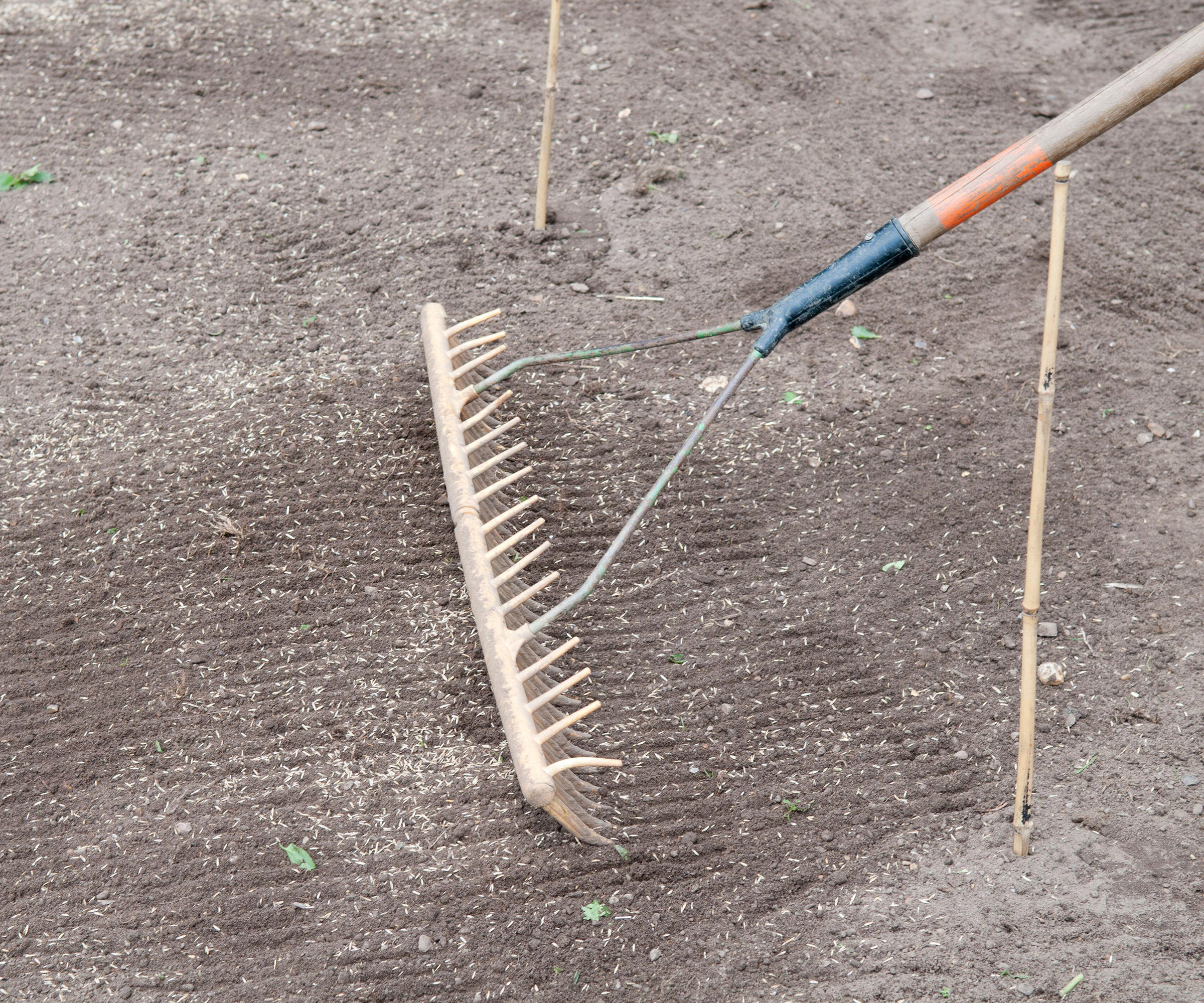
Once the lawn seed has been sown, Guy Jenkins advises you lightly rake the area before lightly rolling or treading in to help the seed take.
"This is crucial because it ensures that the seed has good soil contact, which will aid in its germination and establishment. If at all possible, stay away from the newly overseeded area to give the vulnerable young shoots time to strengthen and aid in establishment," he says.
"Although it is a good idea to keep the area damp as you sow, wait until the best time to water grass when the seed has been firmly planted or it will stick to your roller and shoes! To maintain the seedbed consistently moist, water liberally with a fine spray, ideally in the evening, if dry weather occurs after overseeding."
7. Wait to cut the grass
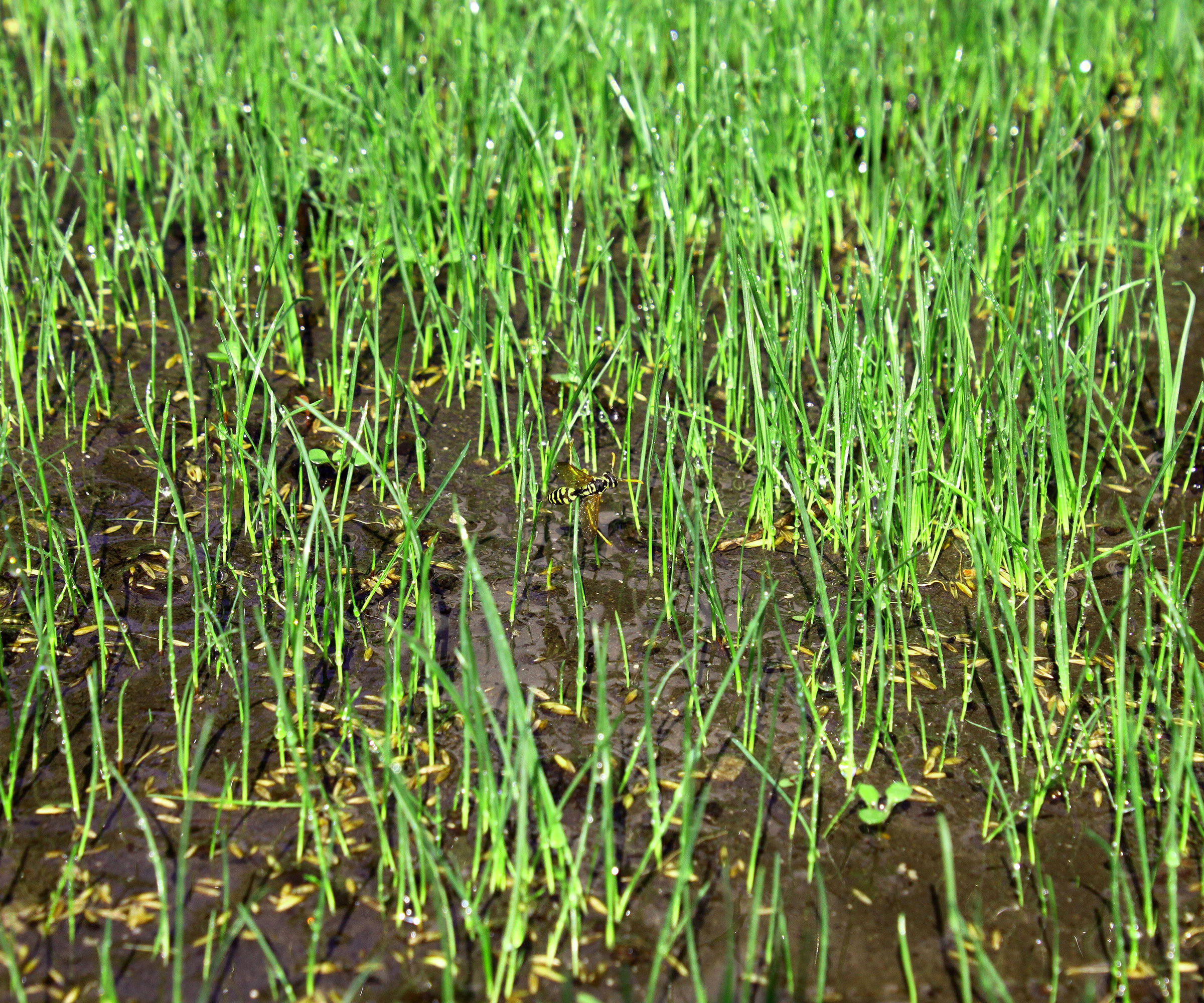
Guy says you should cut the grass for the first time when it is 5-8 cm (2-3 in) high. "For mixtures with ryegrass, trim lightly and gradually decrease your blades to an ideal cutting height of between 50mm (2in) and 25mm (1in), or 25mm (1in) to 13mm (12in) for mixtures without ryegrass."
"Regularly cut the grass but try not to cut more than one-third of the growth at once. The current grass may need to be chopped before the new growth. You can accomplish this by raising the cut to a level that only removes the old grass while leaving the new uncut throughout the ensuing weeks," says Guy.
FAQs
When should I reseed a lawn?
"The process of lawn overseeding requires similar conditions to sowing a new lawn from scratch; it requires milder weather, with temperatures around 8 – 10 °C and plenty of rainfall," explains Chris McIlroy.
"This means the best time to sow grass seed and overseeding in the UK are during the months of spring or autumn. Getting the conditions right for sowing and overseeding ensures your lawn grows as best it can!"
Garden expert Jane Dobbs favours early autumn as the best time to overseed your lawn. "Most regions have the best weather between August and September. At this time of year, seedlings benefit from warm days and cool nights," she says.
"A lush and healthy lawn requires good timing. You may feel tempted to overseed during the summer, but don't do it. You should overseed cool-season and warm-season grasses in autumn. Because of the mild temperatures, weed competition is reduced, and moisture is high, autumn is perfect for seed germination," says Jane
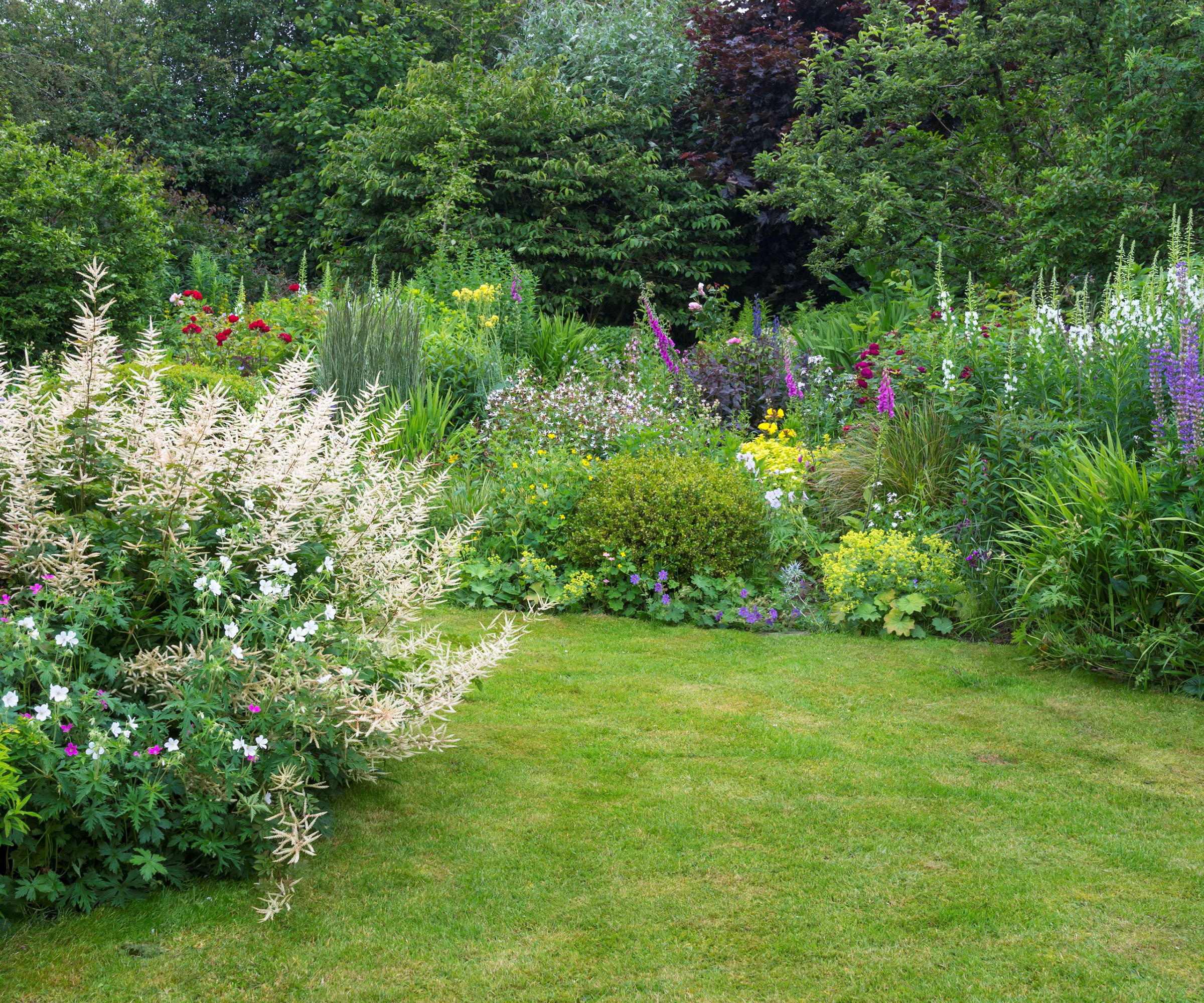

Responsible for leading the gardening team at Allan's Gardeners, a landscaping and garden maintenance business based in London. She has 10 years experience as a gardener.
How long does it take to overseed a lawn?
This is dependent on how long grass seeds take to grow. "It usually takes 1 to 2 weeks for the seeds to germinate when reseeding a lawn, and another 8 to 10 weeks for the new grass to fully establish itself,' says Russell Birchell, Founder at Hedging UK.
"For optimal lawn health, consider reseeding your lawn every 3 to 4 years. Regular overseeding can keep your lawn thick and healthy without the need for a complete renovation," says Russel.

Russel is an expert on lawn and plant health. With a passion for horticulture and expertise in landscaping.
Which type of grass seed is best for overseeding?
Guy Jenkins, an expert at Johnsons Lawn Seeds, says the first step to lawn success in your garden design is to decide what you need most from it.
He said: "Does your lawn need to be hard-wearing for heavy family use, is it mainly a space to relax in, or must it be low maintenance if you have little time for gardening?
"Do you have shady areas with difficult dry ground, are you looking to create a showpiece lawn, or perhaps a country meadow effect? You might be seeding from scratch, repairing bare patches, or want a thicker lawn fast.
"You then need to keep those main aims in mind when choosing lawn seed and taking care of your lawn each season."
David says the best type of seed is a native one and a mix of bent and fescue seed is more sustainable.
Rye seed is the largest and quickest seed but is not a great long-term option because it doesn’t reproduce. It germinates quickly and because it only grows vertically, it can have a drastic effect on allowing enough light, air, food and water to the other native varieties.
Should I use a fertiliser when overseeding?
Gardeners should be careful when using fertiliser, such as Westland Safelawn from B&Q, on the lawn.
Overseeding is all about competition for new seeds against existing, stronger grass plants.
David says: “If you give the lawn feed prior to seeding, the existing grass will be growing and new seeds will not want to germinate.
“That said, most mistakes are made by not adding food when the new seeds really do need it – and that’s as soon as it has germinated.
“A seedling is weak and requires force feeding in its infancy. Applying a feed at the germination stage will allow it to quickly evolve into a stronger, healthier grass plant.”
Once you've neatened up the patches on your lawn you can improve the look of it further with smart lawn edging ideas.
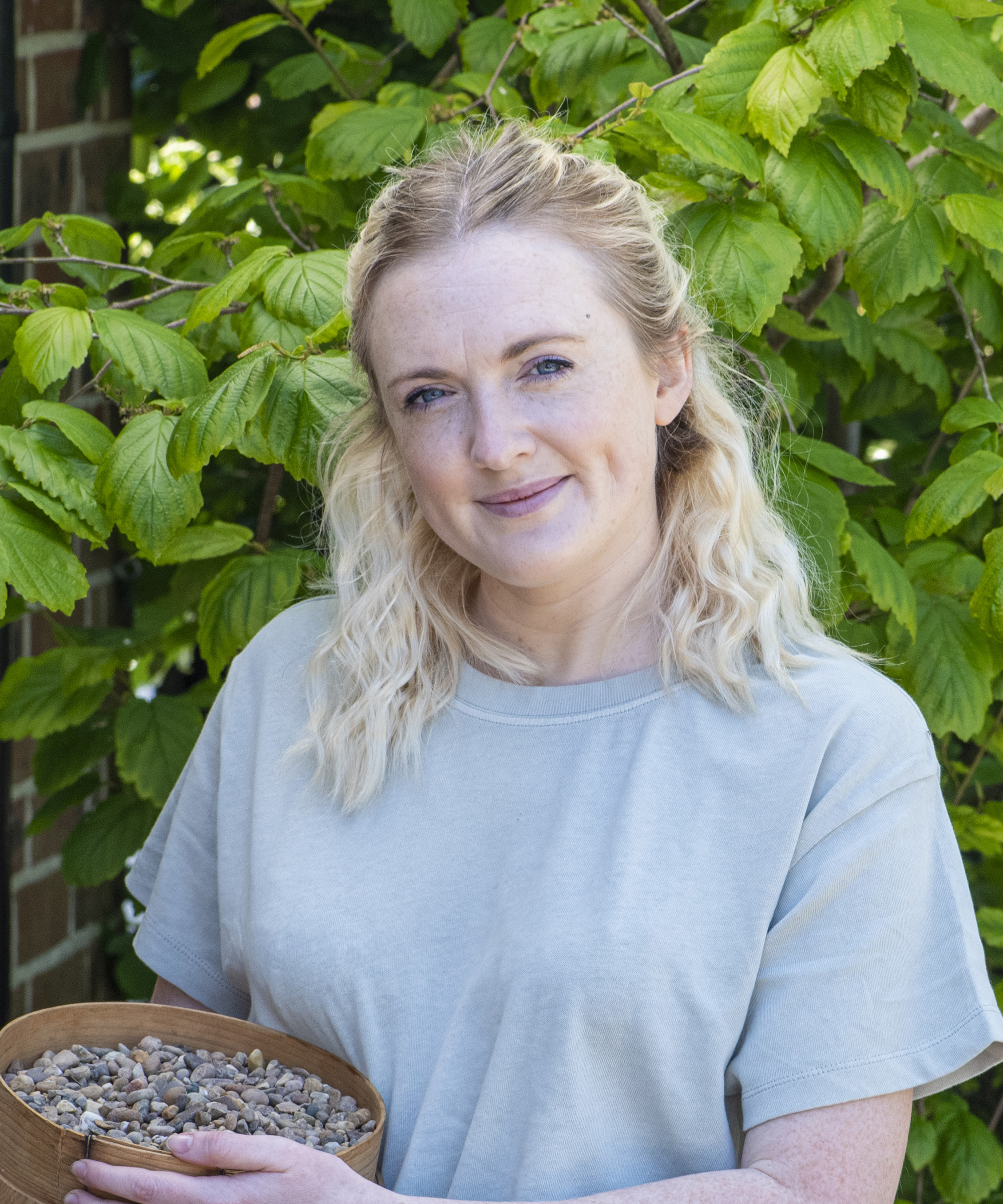
Teresa was part of a team that launched Easy Gardens in 2018 and worked as the Editor on this magazine. She has extensive experience writing and editing content on gardens and landscaping on brands such as Homes & Gardens, Country Homes & Interiors and Living Etc magazine. She has developed close working relationships with top landscape architects and leading industry experts, and has been exposed to an array of rich content and expertise.
In 2020 Teresa bought her first home. She and her partner worked alongside architects and builders to transform the downstairs area of her two bedroom Victorian house in north London into a usable space for her family. Along the way she learned the stresses, woes and joys of home renovation, and is now looking to her next project, landscaping the back garden.
